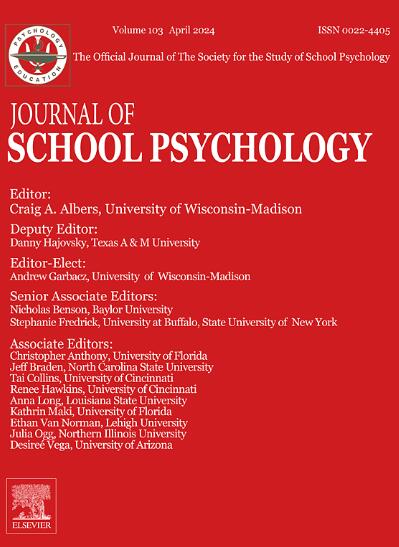Distributional moderation analysis: Unpacking moderation effects in intervention research
IF 4.1
1区 心理学
Q1 PSYCHOLOGY, SOCIAL
引用次数: 0
Abstract
Moderation and subgroup analyses are well-established statistical tools to evaluate whether intervention effects vary across subpopulations defined by participants' demographic and contextual factors. Moderation effects themselves, however, can be subject to heterogeneity and can manifest in various outcome parameters that go beyond group-specific averages (i.e., means) that are typically the focus of main and moderation effect analyses. The present study introduces distributional moderation analysis using the framework of inflated Generalized Additive Models for Location, Scale, and Shape (GAMLSS) that allows researchers to holistically characterize intervention effect modifiers through simultaneously modeling conditional mean-, variance-, skewness-, and kurtosis-based intervention effects, as well as moderated treatment effects located at the endpoints of the response scale (i.e., floor/ceiling effects). Data from a large-scale randomized controlled trial evaluating the effects of a teacher classroom management program on students' disruptive classroom behavior are used to provide a step-by-step guide for applying distributional moderation analysis in school-based intervention research. Although a traditional mean-focused analysis suggests that the intervention reduced students' average disruptive behavior only for students receiving special education, an evaluation of distributional treatment effects reveals a general decrease in the average disruptive behavior for at-risk students. In addition, distributional moderation analysis suggests that this average decrease is moderated by students' race and that the moderation effect of special education status initially seen in the traditional analysis is not located in the means, but in the chance to show no disruptive behavior patterns at all. Thus, we conclude that distributional moderation analysis constitutes a valuable complementary tool to provide a fine-grained characterization of treatment effect modifiers.
分布调节分析:干预研究中的解包调节效应
适度和亚组分析是一种完善的统计工具,用于评估干预效果是否在由参与者的人口统计学和环境因素定义的亚人群中有所不同。然而,适度效应本身可能受到异质性的影响,并可能表现为超出特定群体平均值(即平均值)的各种结果参数,而这些参数通常是主要和适度效应分析的重点。本研究使用位置、规模和形状的膨胀广义可加模型(GAMLSS)框架引入了分布调节分析,该模型允许研究人员通过同时建模条件均值、方差、偏度和峰度为基础的干预效应,以及位于反应量表端点的调节治疗效应(即地板/天花板效应),来全面表征干预效应调节剂。一项评估教师课堂管理计划对学生破坏性课堂行为影响的大规模随机对照试验的数据,为在校本干预研究中应用分布适度分析提供了一步一步的指导。虽然传统的以均值为中心的分析表明,只有接受特殊教育的学生的干预减少了学生的平均破坏行为,但对分配治疗效果的评估显示,有风险的学生的平均破坏行为普遍减少。此外,分布调节分析表明,这种平均下降受到学生种族的调节,而传统分析中最初看到的特殊教育地位的调节作用并不在于平均数,而在于根本没有表现出破坏性行为模式的机会。因此,我们得出结论,分布适度分析构成了一个有价值的补充工具,以提供治疗效果调节剂的细粒度表征。
本文章由计算机程序翻译,如有差异,请以英文原文为准。
求助全文
约1分钟内获得全文
求助全文
来源期刊

Journal of School Psychology
PSYCHOLOGY, EDUCATIONAL-
CiteScore
6.70
自引率
8.00%
发文量
71
期刊介绍:
The Journal of School Psychology publishes original empirical articles and critical reviews of the literature on research and practices relevant to psychological and behavioral processes in school settings. JSP presents research on intervention mechanisms and approaches; schooling effects on the development of social, cognitive, mental-health, and achievement-related outcomes; assessment; and consultation. Submissions from a variety of disciplines are encouraged. All manuscripts are read by the Editor and one or more editorial consultants with the intent of providing appropriate and constructive written reviews.
 求助内容:
求助内容: 应助结果提醒方式:
应助结果提醒方式:


